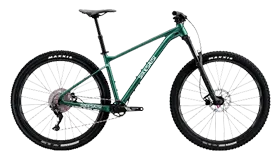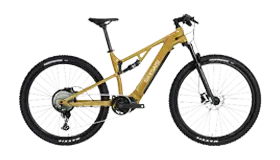Downhill Mountain Bike Buyer’s Guide
Downhill mountain bike is an adrenaline-fueled sport that demands a specialized machine to handle the rigors of steep descents, challenging terrain, and high speeds. If you're ready to conquer the mountains, this comprehensive downhill mountain bike buyer's guide will equip you with the knowledge to make an informed decision and select the perfect bike for your shredding adventures.
1. Understanding Downhill Mountain Bikes
Downhill mountain bikes, also known as DH bikes, are specifically designed for high-speed descents and tackling rough terrain. They are characterized by:
• Sturdy Frame: Constructed from robust materials like aluminum or carbon fiber, DH bike frames provide the strength and durability to withstand the impacts and stresses of downhill riding.
• Long-Travel Suspension: Front and rear suspension with ample travel (180mm to 220mm) absorb bumps, rocks, and roots, keeping the wheels planted and maintaining control over challenging terrain.
• Slack Geometry: A slack head angle and long wheelbase provide stability at high speeds and improve control in rough terrain.
• Powerful Brakes: Hydraulic disc brakes with large rotors offer exceptional stopping power to handle the demands of downhill riding.
• Durable Components: All components, from wheels to drivetrain, are built to withstand the rigors of downhill riding.
2. Choosing the Right Downhill Mountain Bike
When selecting a downhill mountain bike, consider these factors:
• Riding Style: Are you an aggressive rider who enjoys fast descents and technical challenges, or a more casual rider who prefers moderate terrain?
• Budget: Downhill bikes range in price from entry-level models to high-end competition bikes. Set a realistic budget and prioritize features that align with your riding style.
• Frame Material: Aluminum frames offer affordability and durability, while carbon fiber frames provide lightweight performance.
• Suspension Components: High-quality suspension components from reputable brands ensure smooth performance and reliability.
• Brakes: Powerful hydraulic disc brakes with large rotors are essential for downhill riding.
• Drivetrain: Choose a drivetrain with a wide gear range to handle the varied terrain you'll encounter.
3. Essential Features for Downhill Mountain Bikes
• Dual-Crown Fork: A robust dual-crown fork provides the strength and stability needed for downhill riding.
• Air-Spring Suspension: Air-spring suspension allows for precise adjustment to suit rider weight and terrain.
• Tapered Headtube: A tapered headtube increases strength and stiffness in the front end.
• Chainguide: A chainguide prevents the chain from derailing, especially during rough riding.
• Tubeless Tires: Tubeless tires offer improved puncture resistance and reduced rolling resistance.
4. Additional Considerations
• Wheel Size: 27.5-inch and 29-inch wheels are common choices for downhill bikes. 27.5-inch wheels offer maneuverability, while 29-inch wheels provide better rollover over obstacles.
• Tire Choice: Choose tires with aggressive tread patterns for traction in loose and rocky terrain.
• Personal Fit: Ensure the bike fits you properly for optimal comfort and control. Adjust the saddle height, handlebar position, and suspension settings to suit your preferences.
5. Conclusion
Downhill mountain biking is an exhilarating sport that offers a unique blend of challenge, excitement, and connection with nature. With the right bike and proper safety gear, you can conquer the trails, experience the thrill of downhill riding, and create unforgettable memories. Remember to ride within your limits, respect the environment, and always follow local regulations and safety guidelines. Happy shredding!










